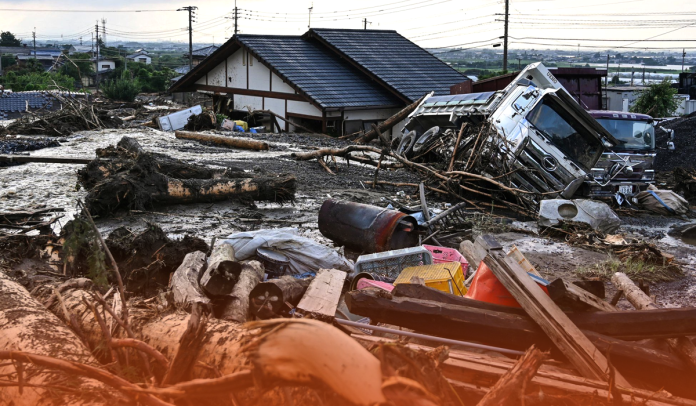China’s Beijing is under severe Flooding after the heaviest rainfall in 140 years, and the region is going through worse conditions as Typhoon Khanun hits Japan with heavy winds and rain. According to the Chinese Meteorologists Service, this is the heaviest rain recorded since 1883. The department declares that by the remains of Typhoon Doksuri, around 744 millimeters (29 inches) of rain fell in the Chinese capital between Saturday and Wednesday morning. They say this is the highest number recorded since the records started in 1883. This is a disturbing number for any region and can cause severe devastation and endanger lives.
At the same time, Typhoon Khanun passed by its nearest Okinawa Island, in southwestern Japan. Khanun hit the island with a wind speed of 220 Kilometers per hour which is as disastrous as a Category 4 Atlantic hurricane. Weather stations have reported that in the recent 24 hours, several areas of Okinawa have faced rainfall of 175 to 220 millimeters (6 to 8 inches). Okinawa Electric Power Company reported that the government ordered more than 600,000 citizens to leave their homes, and around 200,000 houses are facing a lack of power as mighty blazes have taken the power lines.
According to weather reports, in the next 48 hours, the center of Khanun is to stall in the East China Sea. It will turn to Japan’s northern Ryukyu Islands by the weekend and avoid a direct hit to China’s eastern coast, leaving the area out of further trouble. Doksuri Typhoon remnants have already drenched the eastern Chinese beach.
Khanun Storm Is Weakening
The Khanun is moving slowly, and it is also weakening, although its outer bands can potentially bring heavy rain and speedy winds over Zhejiang, China’s eastern Province, and near the coast near Shanghai in the following days. Khanun impacts very after the Doksuri Typhoon brought rainfall and floods to eastern Beijing, drifted cars, and destroyed a bridge. According to Chinese state media, Beijing Daily, the typhoon killed around 12 people only in Beijing, and 12 are still missing. More than 127,000 people were forced to evacuate their homes to minimize the potential losses.

Source: Web
Chinese state broadcaster CCTV reported nine people dead in Hebei province, surrounding the capital. At Ten weather station in Hebei, the rainfall broke records, state-run news agency Xinhua expressed. By Tuesday, more than 300 people were trapped in a residential building, and a video showed that the water made its way to the building’s basement. According to the state media reports, a woman stated that there was no water to drink in the building and no power or gas.
Okinawa is Under High Alert As Heavy Blazes are Heading The City
The heavy rainfall affected over 133,900 people in Zhuozhou City, CCTV reported. It was anticipated that rainfall in Beijing and Hebei would slow down while several other regions were warned about the heavy rain. The state-run news agency said that Chinese President Xi Jinping had demanded all efforts for search and rescue to minimize casualties and losses. He also urged to restore the living conditions immediately.
Okinawa is expected to face blazes of much higher speed of around 252 Km/h. This island is under high alert, and around 20000 people are advised to leave their homes, and about 900 flights are canceled at Naha airport in Okinawa. This is the peak time for tourism, and such weather is rare during this time. But scientists have already anticipated that global warming will trigger storms and heat waves, and both have hit some parts of Asia.
Scientists have said the emissions of several dangerous gases into the air, including carbon, are causing global warming. The more the emission is, the more environment is affected, and global warming rises. The three storms have combined and created a challenging situation for the Chinese government and citizens. The government is trying to minimize the losses and bring the life cycle to normal, but the impact is immense. Nearly one million people have evacuated their homes only in two cities, Beijing and Hebei. Many people are looking for shelter in the open sky in the rain.





